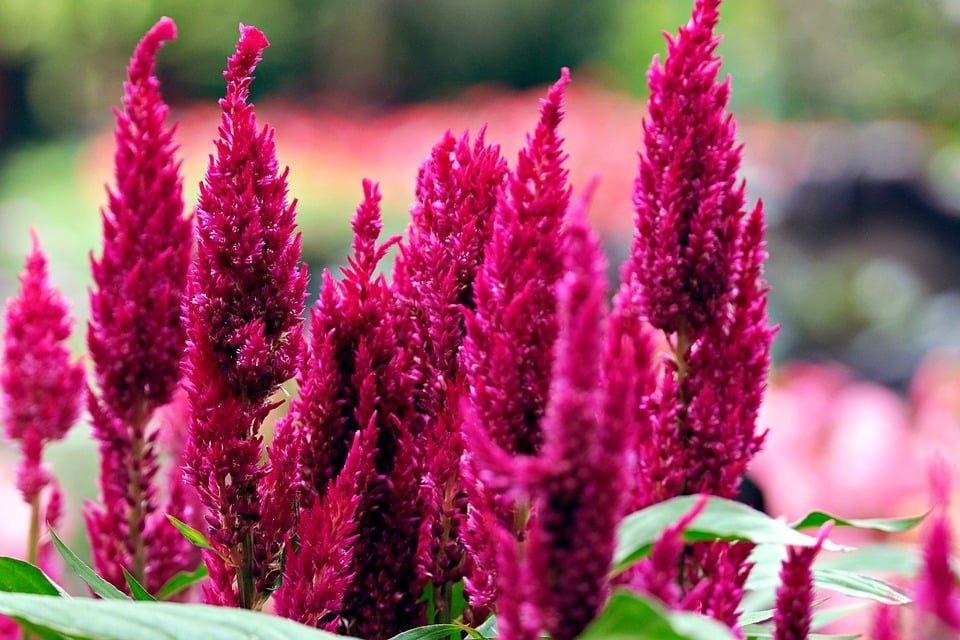Table of Contents
Celosia plants give you stunning flowers and vivid colours for your garden. Known as wool flowers, the celosia hails from tropical climates; they can be annual and perennial, depending on their environment. This summer flowering plant displays shades of pink, red, orange, and green while blooming. Most will either love or hate celosia due to its unique flowers and remarkable appearance. They are perfect for gardens or balconies. The celosia flowers will add flair to your garden with their dazzling flowers.
You can easily grow celosia plants indoors or outdoors as long as it is planted in a suitable spot. With several varieties like Celosia argentea to choose from, you will be spoilt for choice. Since this plant is from tropical places, they need additional care and the right growing conditions to thrive in the UK.
You can even plant many celosia plants, which will surely turn heads as people walk past your garden.
About The Celosia Plant
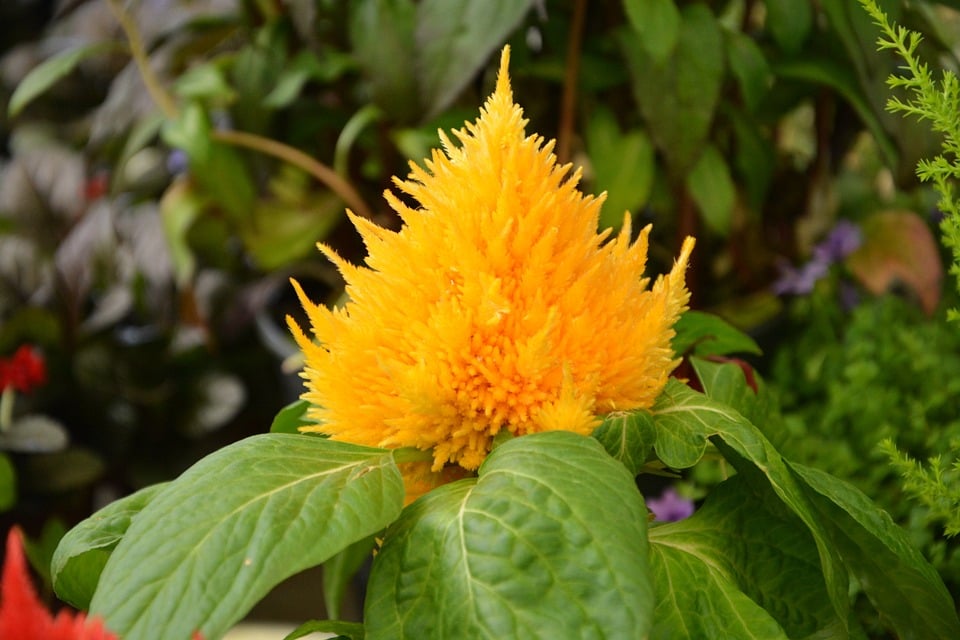
Celosia is a genus consisting of edible and decorative plants. It belongs to the Amaranth or Amaranthaceae family. The plant is native to East Africa and the Mediterranean, but it has spread to other tropical and subtropical regions in the world. You can pick from many cultivars in the UK, such as Dragon’s Breath, Century Rose, Flamingo Feather, Glow Red, or Fresh Look Orange. You will enjoy plenty of blooms in your garden or inside your home.
A Brief Overview of Celosia
- Scientific Name – Celosia
- Common Name – Woolflower
- Native – Mediterranean and East Africa
- Hardiness – H2
- Height – 0.1 – 1 m
- Spread – 0.1 – 0.5 m
- Sunlight – Full sun
How to Grow Celosia Plant
You should definitely plant celosia in your garden, and you and everybody else will enjoy the plant’s unique flowers and appearance. There are several cultivars for you to choose from, including dwarf varieties. Celosia plants make good companions to vibrantly coloured flowers like Canna lilies and tender salvias.
1. Sowing and Propagating Celosia
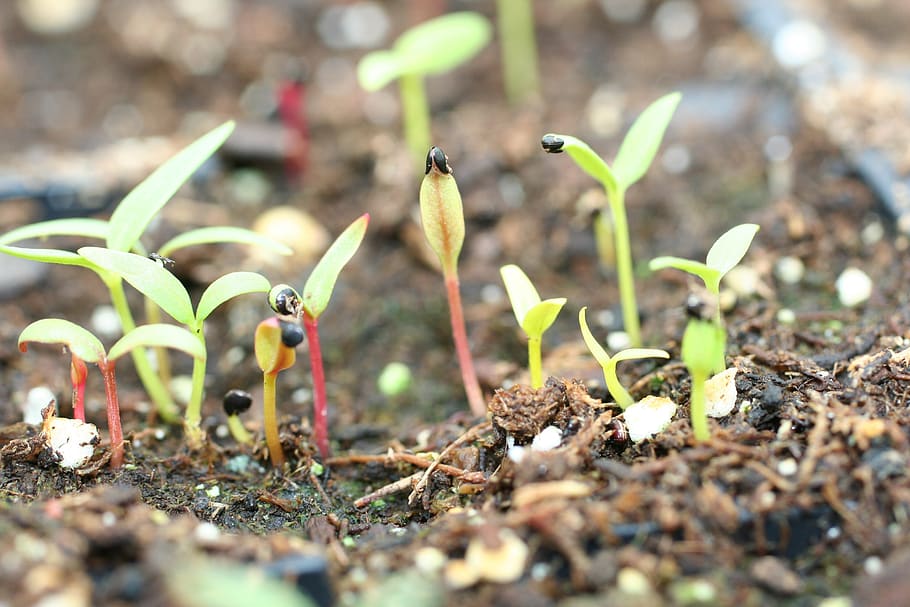
Celosia seeds need to be sown in early spring. You will need a heated propagator since the celosia seeds need constant humidity and temperatures between 20 – 25°C for germination. Preferably, you should sow celosia seeds in biodegradable and individual pots so that the roots do not get disturbed when you move them to the garden. You can even use cardboard toilet roll tubes as biodegradable pots.
Fold one end of the cardboard tube so the compost stays in; plant the whole tube with the seedling and compost. Fill the pots with moist and seed-starting compost; make sure to mix in perlite or an approximate ratio of 2:1. Put the seeds on the surface and cover them lightly with the mixture.
Let the seeds grow indoors before you harden them off, and plant the celosia in the garden during early summer. If you buy young celosia plants, get them in early summer and plant them in your garden from mid-May onwards. A west or south-facing spot is perfect. Plant them 20 to 25 cm apart so that they can spread out evenly.
2. Which Soil to Use
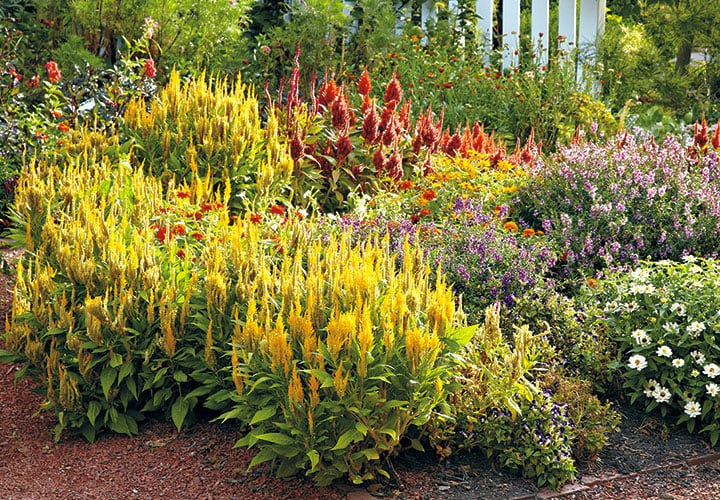
When planting celosia in the garden, the soil should be chalk, sand, or loam. The soil should also be moist and have good drainage; avoid waterlogged and overly-damp soil. If the soil is not moist enough, the plant may experience early flowering and a shorter flowering span. Regarding the soil pH, celosia plants can handle acidic, alkaline, or neutral soils. You should plant them in a sheltered spot that gets the full sun.
3. Watering and Deadheading
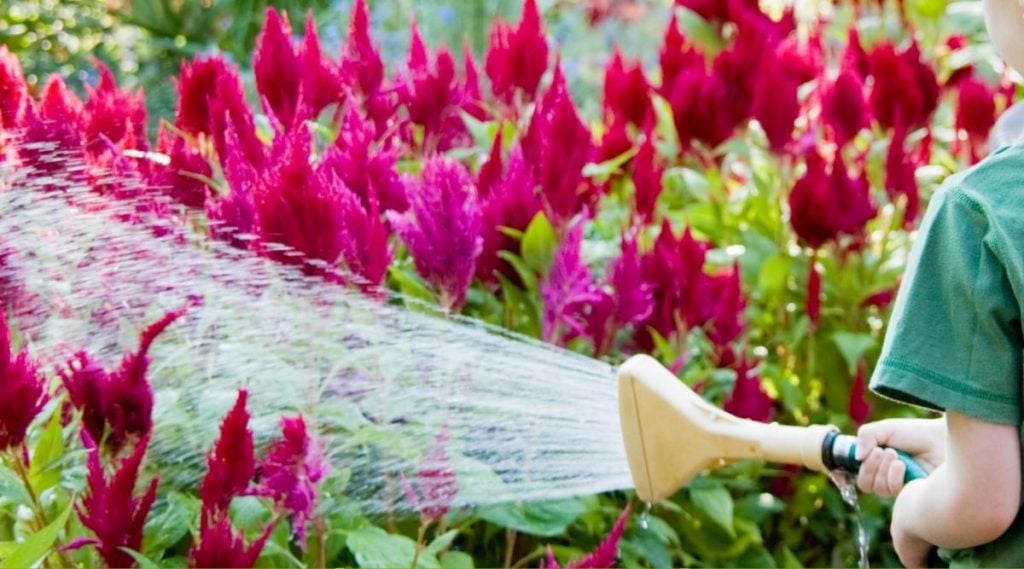
For celosia, the soil or growing medium should be evenly moist but ensure that you do not overwater. If you are growing your celosia in pots and they flower, give them an organic liquid plant feed that is rich in potassium every few weeks or so.
For deadheading, you snip off any faded flowers so that the plant looks neat and future bloom growth is encouraged. The flowers can be harvested before deadheading since the cut flowers are gorgeous. If you dry the blooms, they will keep their colour for about half a year.
4. Using Dry Flowers
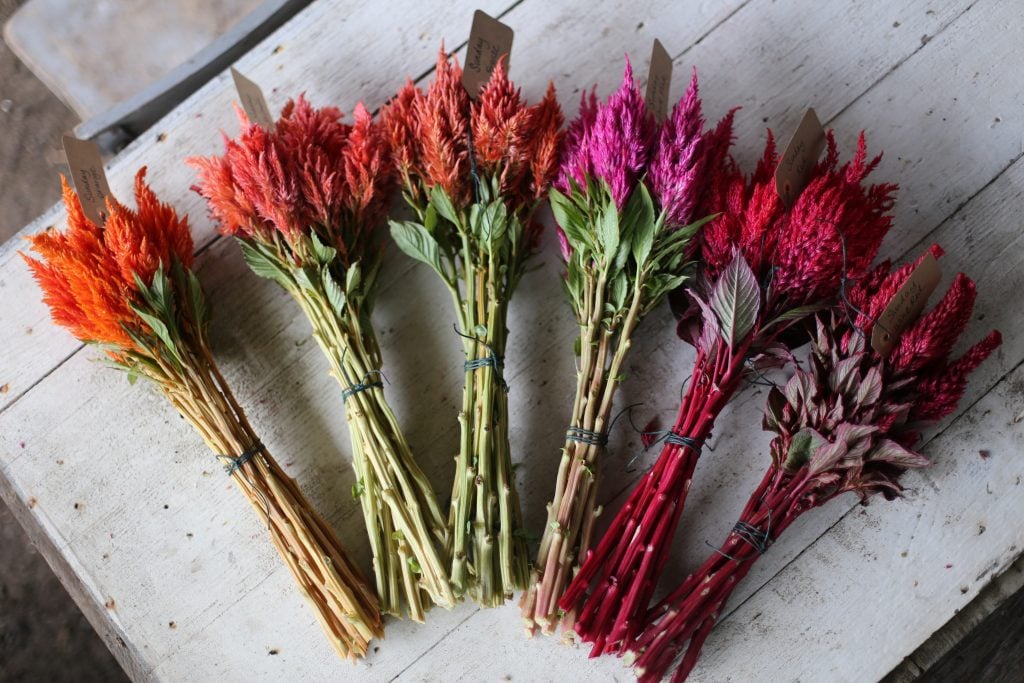
The matured flower blooms can be harvested and added to your flower arrangements; the flower that has not yet set seed should be picked. Cut the longest celosia stems and keep them in a bucket of water till you finish cutting. Tie a rubber band around six to eight stems and hang them upside down in a warm and dry spot; this will keep the stems straight.
The flowers should be at different levels in the bunch for proper air circulation, and the blooms will not get damaged this way. The bundles should be spaced out. Otherwise, mould might set in. Ensure the flowers are not in direct sunlight to preserve the bright colours.
5. Overwintering Celosia
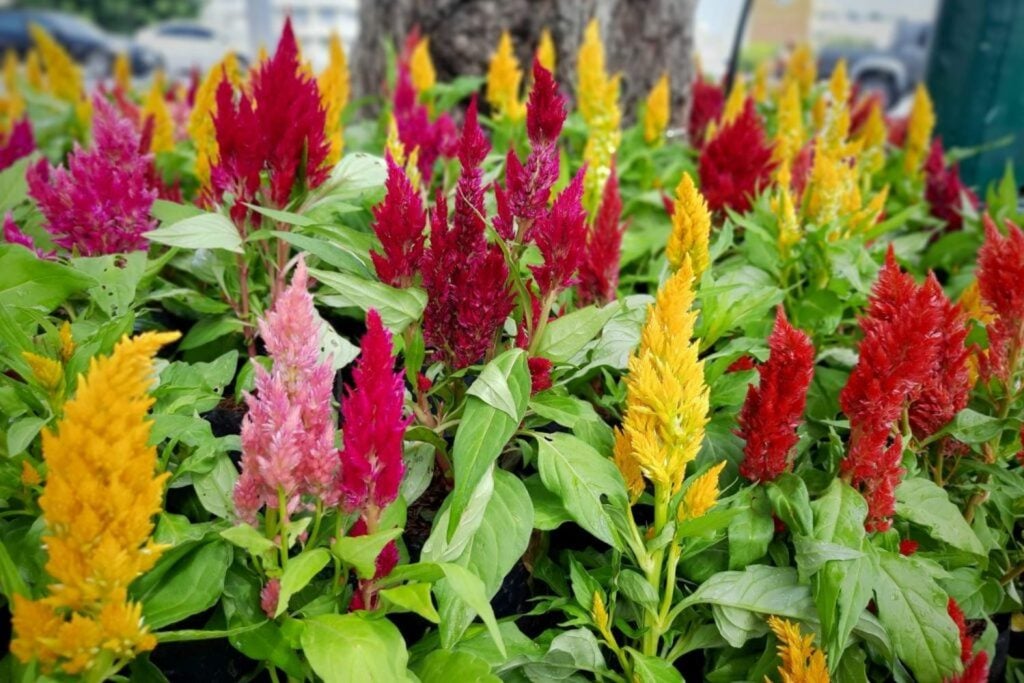
Celosia has a hardiness of H2 which means they handle cold temperatures but not below 5°C. They need the full sun and should avoid harsh winds. For overwintering, the pots should be in a warm place all year round: water them sparingly but no fertilising in the winter months. A greenhouse with artificial light is a good overwintering spot. Or you could always sow new celosia seeds in the following year.
When you have to move your celosia from indoors in the springtime, gradually acclimate the plant to outdoor conditions. Put the plant in partial shade for a few hours and slowly increase the amount of time the plant is outside.
6. Common Problems Affecting Celosia Plants
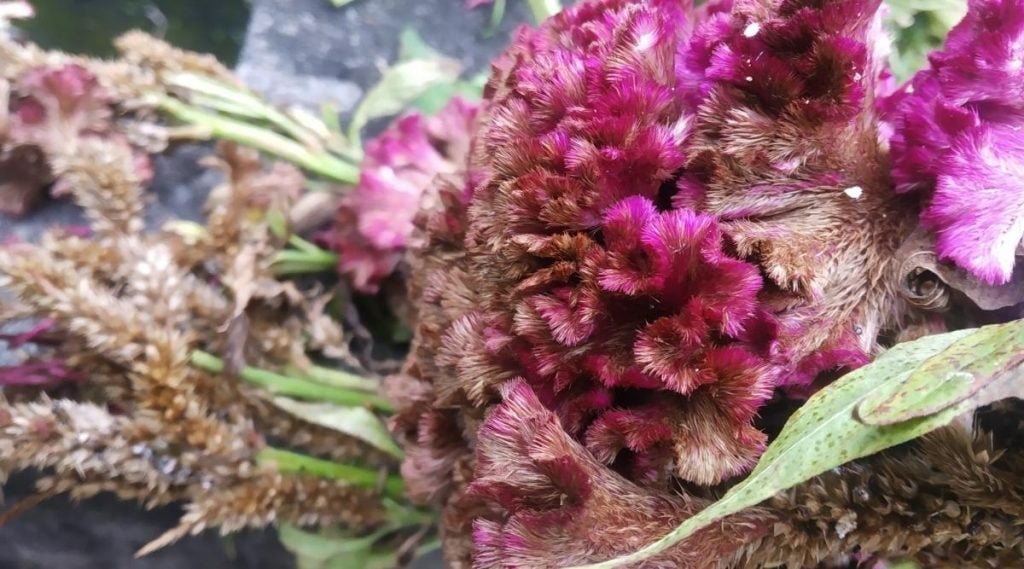
The common issues when growing celosia plants are poor drainage, temperature, and overwatering. Whether planted in a pot or the ground, the soil must have good drainage since the plant does not like waterlogged soil. These plants can not handle temperatures below 5°C, so if your region experiences low temperatures, you will need to overwinter the plants. Overwatering your celosia leads to the yellowing of the leaves, collapsed growth, and rotting or wilted stems.
If you are growing celosia indoors or in a glasshouse, then pests like whiteflies, red spider mites, or aphids will most likely be an issue. Check the celosia regularly for any pests. Ensure your shears or clipping tools are clean to stop the spread of any diseases. Buy your celosia plants in the early summer since buying them early, cooler temperatures, and plentiful rain will affect the growth, and rot could set in.
Gardening Tools for Growing Celosia or Woolflower
Once you have decided to plant celosia in your garden, you need the right tools.
1. Celosia Seeds
Celosia seeds are the first step towards your gardening journey.
- Plant World Seeds – Celosia Spicata ‘Flamingo Feather’ Seeds
- Astonish Seed Package: 50 Celosia Seeds Forestry Feather
- SeeKay Celosia cristata – Dwarf Mixed – Appx 1000 Seeds
- Celosia Amigo Mixed Seeds Approx. 50 Seeds Pot or Tub Plant
2. Young Celosia Plants
Instead of seeds, you can buy young celosia plants for your garden.
- Celosia Super Dwarf Kimono Mixed Approx. 50 Seeds Pot or Tub Plant
- Celosia Amigo Mixed Seeds Approx. 50 Seeds Pot or Tub Plant
- Posted. 100PCS Flaming Celosia Argentea (Celosia Argentea)
- Celosia Super Dwarf Kimono Mixed Approx. 50 Seeds Pot or Tub Plant
3. Plant Feed
Liquid plant feed rich in potassium should also be on your shopping list.
- Miracle-Gro Performance Organics All-Purpose Liquid Plant Food
- Elixir Gardens High Potassium Liquid Fertiliser
- CROPSY Natural Plant Food Organic Liquid Fertiliser
- Miracle-Gro All Purpose Concentrated Liquid Plant Food, 1 Litre
4. Gardening Tools
Gardening tools help you greatly in planting and pruning your celosia plants.
- Grenebo Gardening Tools, 9-Piece Heavy Duty Gardening Hand Tools
- COVACURE Garden Tools Set, 11 PCS Aluminum Alloy Steel Hand Tool
- DEWINNER Garden Tool Set, Hand Tool Gift Kit
- Jardineer Gardening Tools Set – Durable Garden Tools Set 11Pcs
5. Heated Propagator
A heated propagator will help in germinating the celosia seeds.
- DOUUCO Seed Trays,5 Pack Propagator with Heightened Lids
- KAHEIGN 12Pcs Seed Starter Trays, 144 Cells Seed Propagator Trays
- Britten & James Professional Mini Windowsill Propagators
- Stewart 15428389 52 x 41.5 x 28cm Large Heated Propagator
Final Thoughts
Celosia plants are an excellent choice for your garden. Their unique flowers and appearances will make them stand out from the other flowers in your garden; they also make gorgeous cut and dried flowers, perfect for floral arrangements. This plant comes in a wide range of bright colours. Native to Africa, celosia has now spread to other tropical and subtropical regions. Even in the UK, you can plant celosias and get stunning blooms from early summer until the frost comes.
For beginner gardeners, celosia is the perfect low-maintenance plant that needs regular watering. You can try your hand at young plants or seeds for celosia planting. Pet owners can also rest easy since celosia plants are not toxic to cats, dogs, or other animals. So, what are you waiting for?
Brighten up your home or garden with a splash of colour from celosia flowers. In the comments below, share your experience planting and growing celosia plants outdoors or indoors.

